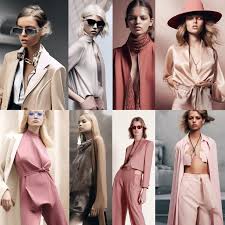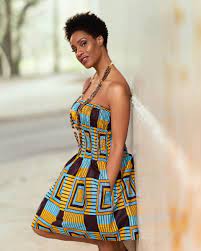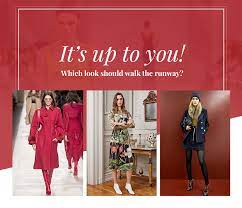Mastering the Art of Fashion Marketing: Strategies for Success in the Industry
The Power of Fashion Marketing
In the fast-paced world of fashion, marketing plays a crucial role in shaping trends, influencing consumer behaviour, and building brand identity. Fashion marketing goes beyond simply promoting clothing and accessories; it is about creating a lifestyle, telling a story, and connecting with consumers on a deeper level.
One key aspect of fashion marketing is understanding the target audience. By identifying their preferences, lifestyles, and aspirations, brands can tailor their marketing strategies to resonate with their audience. This could involve using social media platforms to engage with younger consumers or partnering with influencers to reach a wider demographic.
Visual branding is another important element of fashion marketing. From logos and colour schemes to advertising campaigns and store layouts, visual elements help create a cohesive brand identity that consumers can easily recognise and connect with. Consistency in visual branding builds brand loyalty and fosters trust among consumers.
Furthermore, storytelling has become an integral part of fashion marketing. By creating compelling narratives around their products, brands can evoke emotions, create intrigue, and establish a deeper connection with consumers. Whether it’s highlighting the craftsmanship behind a garment or showcasing the inspiration behind a collection, storytelling adds depth and meaning to the brand.
In today’s digital age, online marketing has become increasingly important in the fashion industry. E-commerce websites, social media platforms, email campaigns, and influencer collaborations are just some of the ways brands can reach their target audience online. Digital marketing allows for greater reach, real-time engagement with consumers, and data-driven insights for more effective strategies.
In conclusion, fashion marketing is an ever-evolving field that requires creativity, strategy, and an understanding of consumer behaviour. By leveraging the power of storytelling, visual branding, digital platforms, and consumer insights, brands can effectively communicate their message, build brand loyalty, and drive sales in today’s competitive fashion landscape.
Exploring the Benefits of Fashion Marketing: Building Brands, Boosting Sales, and Understanding Consumers
- Fashion marketing helps build brand awareness and recognition among the target audience.
- It allows brands to create a unique identity and differentiate themselves from competitors.
- Effective fashion marketing can increase sales and drive revenue for fashion businesses.
- By engaging with consumers through storytelling, fashion marketing can foster brand loyalty and emotional connections.
- Fashion marketing provides valuable insights into consumer preferences, trends, and behaviour that can inform future strategies.
Challenges in Fashion Marketing: Navigating Competition, Trends, and Consumer Trust
- High competition in the fashion industry can make it challenging for brands to stand out with their marketing efforts.
- Constantly changing trends require frequent adjustments to marketing strategies, which can be time-consuming and costly.
- Fashion marketing campaigns may not always resonate with the target audience, leading to low engagement and effectiveness.
- Influencer collaborations can be expensive and may not always result in a significant return on investment for brands.
- Misalignment between brand values and marketing messages can lead to consumer distrust and damage brand reputation.
- Over-reliance on digital platforms for marketing can limit opportunities for more traditional forms of promotion, potentially missing out on certain demographics.
- Negative publicity or controversies surrounding a brand’s marketing campaign can have long-lasting repercussions on its image and sales.
Fashion marketing helps build brand awareness and recognition among the target audience.
Fashion marketing serves as a powerful tool in cultivating brand awareness and recognition within the desired consumer base. By strategically promoting products through various channels, such as social media, advertising campaigns, and influencer collaborations, fashion brands can effectively establish their presence in the market and capture the attention of their target audience. Consistent brand messaging and visually appealing campaigns help create a strong brand identity that resonates with consumers, ultimately leading to increased visibility, loyalty, and trust in the brand.
It allows brands to create a unique identity and differentiate themselves from competitors.
Fashion marketing provides brands with a powerful tool to craft a distinctive identity and set themselves apart from competitors in the crowded marketplace. By strategically communicating their brand values, aesthetics, and storytelling through marketing campaigns, brands can establish a unique personality that resonates with their target audience. This differentiation not only helps in building brand loyalty but also creates a memorable impression that distinguishes them from others, ultimately leading to increased visibility and competitiveness in the fashion industry.
Effective fashion marketing can increase sales and drive revenue for fashion businesses.
Effective fashion marketing plays a pivotal role in boosting sales and driving revenue for fashion businesses. By strategically promoting products, engaging with target audiences, and creating compelling brand narratives, fashion marketing can influence consumer behaviour and encourage purchase decisions. Through targeted campaigns, collaborations with influencers, and innovative digital strategies, fashion businesses can not only attract new customers but also retain existing ones, ultimately leading to increased sales and revenue growth.
By engaging with consumers through storytelling, fashion marketing can foster brand loyalty and emotional connections.
Through the art of storytelling, fashion marketing has the remarkable ability to cultivate strong brand loyalty and forge deep emotional connections with consumers. By weaving narratives that resonate with their audience, brands can create a sense of authenticity, relatability, and shared values. This emotional engagement not only fosters trust and loyalty but also establishes a lasting bond between the brand and its customers. When consumers feel connected on a personal level through compelling stories, they are more likely to remain loyal to the brand and become advocates for its products and values.
Fashion marketing provides valuable insights into consumer preferences, trends, and behaviour that can inform future strategies.
Fashion marketing serves as a valuable tool for brands to gain in-depth insights into consumer preferences, trends, and behaviour. By analysing the response to marketing campaigns, monitoring sales data, and studying consumer interactions, brands can gather crucial information that guides future strategies. Understanding what resonates with consumers allows brands to tailor their offerings, messaging, and experiences to better meet customer needs and stay ahead of evolving trends. This data-driven approach not only enhances brand relevance but also fosters long-term relationships with customers by delivering products and experiences that align with their preferences.
High competition in the fashion industry can make it challenging for brands to stand out with their marketing efforts.
In the fiercely competitive landscape of the fashion industry, brands often find themselves grappling with the daunting task of standing out amidst a sea of competitors. The saturation of the market, coupled with ever-changing consumer preferences and trends, poses a significant challenge for brands looking to make a lasting impact with their marketing efforts. In such a crowded space, it becomes increasingly difficult to differentiate oneself and capture the attention of target audiences effectively. This intense competition underscores the importance of innovative strategies, creative storytelling, and unique brand positioning to carve out a distinct identity in an industry where visibility is key to success.
Constantly changing trends require frequent adjustments to marketing strategies, which can be time-consuming and costly.
One significant drawback of fashion marketing is the constant evolution of trends, necessitating frequent adjustments to marketing strategies. This perpetual cycle of change can be both time-consuming and costly for brands, as they must continuously adapt their messaging, visuals, and campaigns to stay relevant in the ever-shifting landscape of fashion. Keeping up with the latest trends and consumer preferences requires a significant investment of resources, both in terms of time spent on research and development and financial commitments to execute new marketing strategies effectively. This relentless demand for adaptation can strain a brand’s resources and limit its ability to establish long-term marketing plans with stability and consistency.
Fashion marketing campaigns may not always resonate with the target audience, leading to low engagement and effectiveness.
Fashion marketing campaigns may sometimes miss the mark and fail to resonate with the intended target audience, resulting in low engagement and effectiveness. When the messaging, visuals, or overall concept of a campaign do not align with the preferences, values, or aspirations of the target demographic, it can lead to a disconnect that hinders consumer engagement. In such cases, brands may struggle to capture the attention and interest of their audience, ultimately impacting the success of their marketing efforts and potentially diluting their brand identity in the eyes of consumers.
Influencer collaborations can be expensive and may not always result in a significant return on investment for brands.
One notable drawback of fashion marketing is the potential cost and uncertain returns associated with influencer collaborations. While partnering with influencers can offer brands access to a wider audience and increased visibility, the financial investment required for such collaborations can be substantial. Moreover, there is no guarantee that the partnership will translate into a significant return on investment in terms of increased sales or brand recognition. Brands must carefully evaluate the cost-effectiveness of influencer collaborations and consider alternative strategies to ensure that their marketing efforts yield measurable results within their budget constraints.
Misalignment between brand values and marketing messages can lead to consumer distrust and damage brand reputation.
When there is a misalignment between a fashion brand’s values and its marketing messages, it can result in consumer distrust and harm the brand’s reputation. Consumers today are increasingly conscious of the values and ethics behind the brands they support, and any inconsistency between what a brand claims to stand for and how it actually behaves can erode trust. This disconnect can lead consumers to question the authenticity of the brand, resulting in a loss of credibility and loyalty. It is crucial for fashion marketers to ensure that their messaging aligns closely with the core values of the brand to build trust and maintain a positive reputation among consumers.
Over-reliance on digital platforms for marketing can limit opportunities for more traditional forms of promotion, potentially missing out on certain demographics.
An inherent con of fashion marketing lies in the over-reliance on digital platforms, which can inadvertently restrict opportunities for more traditional forms of promotion. By heavily focusing on online marketing strategies, brands run the risk of overlooking certain demographics that may not be as digitally engaged. This limitation could result in missing out on valuable connections with consumers who still prefer traditional advertising channels, such as print media or physical retail experiences. Balancing digital and traditional marketing approaches is crucial to ensure a comprehensive reach across diverse consumer segments in the ever-evolving landscape of fashion marketing.
Negative publicity or controversies surrounding a brand’s marketing campaign can have long-lasting repercussions on its image and sales.
Negative publicity or controversies surrounding a brand’s marketing campaign can have long-lasting repercussions on its image and sales. When a brand’s marketing efforts are met with criticism or backlash, it can damage consumer trust, tarnish the brand’s reputation, and lead to a decline in sales. In today’s interconnected world where news spreads rapidly through social media and online platforms, any misstep in a marketing campaign can have far-reaching consequences for a brand. It is crucial for fashion brands to carefully consider the potential impact of their marketing strategies to avoid negative publicity that could harm their long-term success.


